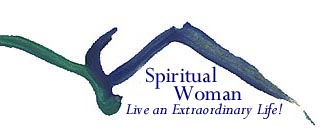 Please Support this Site!
Please Support this Site!
Visit the Spiritual Woman Blog
Get RSS Feed at http://feeds.feedburner.com/SpiritualWoman
 Please Support this Site!
Please Support this Site!
|
Please subscribe to our free ezine below: |
Visit the Spiritual Woman Blog Get RSS Feed at http://feeds.feedburner.com/SpiritualWoman |
|
Home Prayer Christmas Discerning the Will of God Relationships and Family Finding Meaning in Work Nurturing the Creative Spirit When Life Hurts Spiritual Direction Profiles in Faith Book Reviews Links Contact Us Submit an Article |
How to Create Your Own Needlework Designsby Patrice Fagnant-MacArthur While working from kits and color charts can create beautiful results, there may come a time when you wish to experiment a bit more and create a pattern of your very own. Inspiration is all around you - a favorite photograph, a picture in a newspaper, magazine or book, an arrangement of flowers or household items in your home. You need not even restrict yourself to realistic images. Geometric and abstract designs can also make for interesting, colorful needlework. Play with patterns of squares and circles to see what you can come up. Ideas for your needlework are only limited by your imagination! Once you have a subject you wish to work from, its time to think of it in terms of its potential for needlework. It is best to work from a two-dimensional image of some type. If working from a photograph or picture, you are all set. Otherwise, you will need to draw your image, or take a photograph of it. The next step is to place tracing paper over that image and trace the outlines. If working with a complex shape with different gradations of color, it can be easier to shade in the darkest areas, create lines in medium shade areas, and leave the lightest areas white. If you have a computer and either a digital camera or a scanner, you can make use of photo-imaging software to manipulate your images. Feel free to experiment! Simply save your original scan or photo so that you can always revert back if you do not like the results! If working on open-weave material, place your tracing over graph paper, and square off your design to follow the lines of the graph paper. One square equals one stitch in this method. Use your tracing with the graph paper underneath as a color chart for your cross-stitch or embroidery. You may want to mark on your tracing what color or stitch you plan to use to fill in certain areas. If working on a close-weave material, pin your tracing paper to the fabric, and use small stitches to tack the design. Then gently remove the tracing paper. Remove the tack stitches as you embroider or once the design is completed. A wonderful resource for experimenting with designs is: Exploring Cross-Stitch by Audrey Ormrod (Wallace-Homestead Book Company; Greensboro, NC, 1998). Patrice Fagnant-MacArthur is editor of "The Spiritual Woman Newsletter." She has a B.A. in Fine Art and a Master of Arts in Applied Theology from Elms College. |